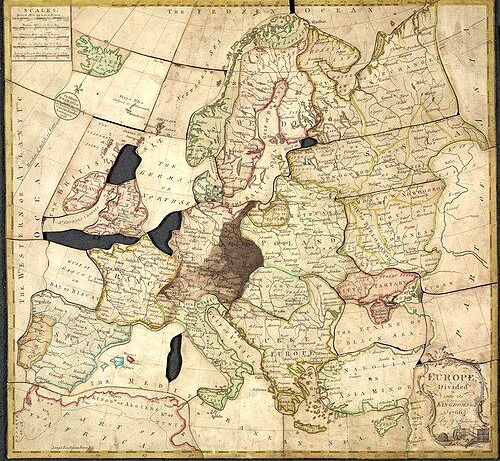Origin of the Jigsaw Puzzle
John Spilsbury is believed to have produced the first jigsaw puzzle around 1760 using a marquetry saw. Early puzzles, known as dissections, were produced by mounting maps on sheets of hardwood and cutting along national boundaries, creating a puzzle useful for teaching geography. Royal governess Lady Charlotte Finch used such "dissected maps" to teach the children of King George III and Queen Charlotte. Cardboard jigsaw puzzles appeared in the late 1800s, but were slow to replace wooden ones because manufacturers felt that cardboard puzzles would be perceived as low-quality, and because profit margins on wooden jigsaws were larger.
The name "jigsaw" came to be associated with the puzzle around 1880 when fretsaws became the tool of choice for cutting the shapes. Along with fretsaws, jigsaws and scroll saws have also been noted as tools used to cut jigsaw puzzles into pieces. The term "jigsaw puzzle" dates back to 1906.
Jigsaw puzzles have been used in research studies to study cognitive abilities such as mental rotation visuospatial ability in young children.
A range of jigsaw puzzle accessories, including boards, cases, frames, and roll-up mats, have become available to assist jigsaw puzzle enthusiasts. While most assembled puzzles are disassembled for reuse, they can also be attached to a backing with adhesive and displayed as art.
See the complete article at Wikipedia.



